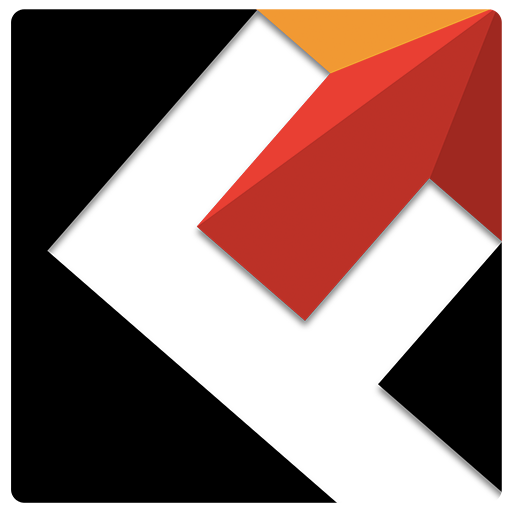







Exploring Types of Paid Ads
Search engine ads, led by Google but also including Bing, allow businesses to target potential customers through search queries and appear in prominent positions. Social media advertising on platforms like Meta, LinkedIn, and Twitter offers precise audience targeting and engagement opportunities. Display advertising networks help businesses reach users across various websites, using programmatic buying and retargeting to boost ad visibility and recall. Some types of paid ads you can explore to boost your business include:

Search Engine Ads
Google and Beyond
When it comes to search engine ads, Google is undoubtedly the primary player. By utilizing Google Ads, you can target potential customers based on their search queries and position your business prominently in search results. However, it’s crucial not to overlook Bing Ads and other search engines, as they can also provide valuable opportunities to reach your target audience.

Social Media Advertising
Meta, LinkedIn, and Twitter
With the rise of social media, platforms like Meta (formerly Facebook), LinkedIn, and Twitter have become powerful advertising channels. By leveraging the extensive user data and targeting options available on these platforms, you can effectively reach your ideal customers and drive meaningful engagement with your brand.

Display Advertising Networks
Maximize the impact
Through display advertising networks, you can showcase your ads on a wide range of websites, reaching potential customers as they browse the internet. Utilizing programmatic ad buying and retargeting techniques, you can maximize the impact of your display ads and stay top-of-mind with your audience.

Video Advertising Platforms
Attention of Your Audience
Video advertising offers an engaging way to capture the attention of your audience. Platforms like YouTube and TikTok provide opportunities to create compelling video ads and target them to specific demographics, interests, and behaviors. By incorporating video advertising into your strategy, you can effectively communicate your brand message and drive conversions.
Step-by-Step Paid Ads Campaign Setup Step-by-Step Paid Ads Campaign Setup
Creating captivating ad content is crucial to grabbing your audience’s attention and driving conversions. Focus on delivering a clear message through persuasive ad copy, visually engaging elements, and a strong call to action. By making your ads both attention-grabbing and action-oriented, you’ll increase the chances of converting viewers into customers and enhancing your overall campaign success.
Start by identifying what you want to accomplish with your paid ads, whether it's boosting brand awareness, driving traffic, generating leads, or increasing sales. Clear objectives will help tailor your campaign to achieve the desired outcomes.
Define Your Campaign Objectives
Clarify Your Goals
Different platforms cater to different demographics. To maximize your campaign's impact, choose platforms where your target audience is most engaged. This ensures your ads are displayed to the right people, optimizing reach and return on investment.
Select the Right Advertising Platforms
Target Relevant Platforms
Set a realistic budget for your campaign and manage your bids strategically to get the best results. Proper budget allocation and bid management are key to ensuring you maximize the effectiveness of your advertising spend.
Allocate Your Budget and Manage Bids
Optimize Your Spend
Focus on crafting ad content that grabs attention and encourages action. This includes writing compelling copy, using eye-catching visuals, and implementing strong calls to action. Effective ad content drives engagement and conversions.
Create Compelling Ad Content
Engage and Convert
Implement tracking pixels, conversion tracking, and analytics tools to monitor your ads' performance. These insights help identify areas for improvement and allow you to optimize your campaign for better results.
Set Up Tracking and Analytics
Monitor Performance Data
Build Your Paid Ads Campaign Now!
Ready to elevate your business with effective paid ads? Define your audience, refine your messaging, and maximize your budget with our expert guidance. Let us help you create a powerful paid ads campaign that drives results.
Optimizing Campaigns for Results Optimizing Campaigns for Results
Keep in mind that creating an effective paid advertising campaign doesn’t end at simply launching your ads. To ensure that you are getting the most out of your investment, it’s crucial to continuously optimize your campaigns for better results. Here are some key strategies to consider in order to maximize your ROI and drive better engagement.
- A/B Testing: The Key to Fine-Tuning Your Ads
- Understanding and Acting on Analytics Insights
- Iterative Approach to Ad Improvement
When it comes to optimizing your paid ad campaigns, A/B testing is an essential technique that allows you to compare different versions of your ads to determine which one performs better. By testing variables such as ad copy, imagery, and targeting options, you can gain valuable insights into what resonates most with your audience. This allows you to make data-driven decisions on which elements to prioritize and fine-tune for improved performance. Remember, the more you test, the more you can learn about what works best for your specific audience and niche.
Understanding and interpreting the data collected from your paid ad campaigns is crucial for optimizing your results. By tracking key metrics such as click-through rates, conversion rates, and cost per conversion, you can gain valuable insights into how your ads are performing. Use this data to identify trends, identify high-performing and underperforming ads, and make informed decisions on where to allocate your budget and resources. By leveraging analytics insights, you can continuously refine your targeting, messaging, and creative to drive better results.
Optimizing paid ad campaigns is an ongoing process that requires a commitment to continuous improvement. Instead of setting and forgetting your campaigns, take an iterative approach by regularly monitoring and adjusting your ads based on performance data. Whether it’s testing new ad formats, refining targeting parameters, or updating ad messaging, it’s important to stay proactive in improving your campaigns. By constantly iterating and making data-driven adjustments, you can ensure that your ads are always optimized for maximum impact and results.
Remember, the digital advertising landscape is constantly evolving, and what works today may not work as well tomorrow. By maintaining an iterative approach to ad improvement, you can stay ahead of the curve and adapt to changes in consumer behavior, platform algorithms, and industry trends, ultimately driving better results for your business.
Factors to Consider When Choosing Platforms
Not all paid advertising platforms are created equal, and it’s important to consider a few key factors when selecting the right ones for your business. Here are some things to keep in mind.

Understanding Your Audience’s Online Behavior
Target Audience
When it comes to choosing the right paid advertising platforms for your business, it’s crucial to understand the online behavior of your target audience. By analyzing their web browsing habits, social media usage, and preferred content consumption channels, you can gain valuable insights into where and how to reach them effectively. For example, if your audience is active on Meta and LinkedIn for professional networking, but not as much on Twitter for casual interactions, you can prioritize those platforms for more targeted ad placement.

Matching Products with Platforms
A Strategic Approach
Matching your products or services with the right paid advertising platforms requires a strategic approach. Consider the nature of your offerings and the types of audiences present on different platforms. For instance, if you’re promoting B2B software solutions, targeting professionals on LinkedIn may yield better results than advertising on Twitter. By aligning your products with platforms that resonate with your target audience, you can maximize the impact of your ads and drive better results.

Considering the Costs and Expected ROI
Cost and ROI
Before diving into paid advertising across various platforms, it’s essential to carefully consider the costs involved and the expected return on investment. While platforms like Google may offer wider reach, they may also come with a higher cost per click, whereas Twitter may provide more cost-effective ad options for certain businesses. Analyzing the potential ROI and aligning it with your advertising budget is crucial for making informed decisions and maximizing the effectiveness of your ad campaigns.

Ad Format Suitability for Your Message
Competition
After producing valuable content, effective promotion and distribution are key. Utilize social media, email marketing, and partnerships to reach a broader audience. Optimize your content for search engines with relevant keywords and metadata to boost organic reach. Consider investing in paid advertising to enhance visibility among targeted demographics. Explore distribution channels like guest posting, influencer collaborations, and affiliate marketing to strengthen brand presence and drive traffic to your e-commerce site.
Tips to Maximize the Impact of Your Paid Ads Tips to Maximize the Impact of Your Paid Ads
To achieve success in digital marketing, it’s essential to optimize both paid advertising and email marketing efforts. Whether you’re navigating the complexities of PPC campaigns or crafting compelling email content, a smart and strategic approach is key. By focusing on spending efficiently and creating personalized, engaging content, you can elevate your campaigns and see significant returns. Let’s explore how you can maximize the effectiveness of these two crucial components of your digital marketing strategy.
- Crafting Compelling Call-to-Actions (CTAs)
- The Importance of Landing Page Optimization
- Mobile Optimization in a Smartphone-Dominant World
- Leveraging Retargeting for Increased Conversions
When it comes to paid advertising, the call-to-action (CTA) is a critical element that can significantly impact the performance of your ads. A strong CTA should be compelling, clear, and relevant to the content of your ad. It should prompt the viewer to take a specific action, whether it’s making a purchase, signing up for a newsletter, or contacting your business.
It’s important to A/B test different CTAs to see which ones resonate best with your target audience. Consider using actionable language, creating a sense of urgency, and offering an incentive to encourage clicks and conversions.
Once a user clicks on your paid ad, the landing page they are directed to plays a crucial role in converting them into a customer or lead. A well-optimized landing page should be relevant to the ad content, visually appealing, and have a clear CTA.
Ensure that your landing page loads quickly, is mobile-friendly, and provides valuable information that aligns with the user’s intent. Test different landing page variations to determine which ones generate the highest conversion rates, and continuously optimize the page to improve performance.
In today’s digital landscape, it’s crucial to prioritize mobile optimization for your paid ads. With a significant portion of internet traffic coming from mobile devices, ensuring that your ads and landing pages are optimized for a seamless mobile experience is paramount.
Make sure your ads are designed to display effectively on mobile screens and that your landing pages are responsive and easy to navigate on mobile devices. By catering to the growing number of smartphone users, you can maximize the impact of your paid advertising efforts and reach a broader audience.
One effective strategy to maximize the impact of your paid ads is to leverage retargeting. With retargeting, you can re-engage users who have previously interacted with your website or shown interest in your products or services.
By serving targeted ads to these users as they continue to browse the web, you can stay top-of-mind and significantly increase the likelihood of conversion. Retargeting allows you to rekindle interest and drive valuable actions from users who may not have converted initially, ultimately maximizing the impact of your paid advertising efforts.
The Pros and Cons of Diverse Paid Ad Platforms
Now let’s take a closer look at the pros and cons of advertising on various platforms to help you make informed decisions for your business. Each platform offers its own unique set of advantages and challenges, so it’s important to carefully consider your goals and target audience when planning your paid ad strategy.

Google Ads
Unmatched Reach and Intent
Pros:
- Extensive reach with access to billions of daily searches.
- Ability to target potential customers when they are actively searching for products or services.
-
Cons:
- High competition for keywords, making it costly to maintain top ad placements.
- Click-through rates can vary significantly based on industry and target keywords.
Meta Platforms (Facebook & Instagram)
Targeting Through Social Engagement
Pros:
- Advanced targeting options allow you to reach specific audience segments by demographics, interests, and behaviors.
- Great for building brand awareness and engagement through visual content.
-
Cons:
- Privacy concerns and changes to tracking and targeting have impacted ad performance.
- Reduced ability to effectively reach desired audiences due to privacy updates.

B2B Professional Connections
Pros:
- Excellent platform for B2B advertising and connecting with decision-makers.
- Access to a professional, industry-specific audience for higher-quality leads.
-
Cons:
- Higher cost per click (CPC) compared to other platforms.
- More expensive to achieve a positive return on investment for smaller businesses.

Real-Time Audience Engagement
Pros:
- Allows for real-time engagement and interaction with potential customers.
- Effective for promoting time-sensitive offers or participating in trending conversations.
-
Cons:
- Character limits restrict the amount of information that can be conveyed in ads.
- Requires concise, impactful messaging, which can be challenging to craft.

Niche Platforms
Specialized and Focused Targeting
Pros:
- Targets highly relevant and specific audiences within industry-specific websites or communities.
- Provides more personalized ad placements for niche products and services.
-
Cons:
- Limited reach compared to larger platforms, which can restrict campaign scalability.
- Can be difficult to achieve a high volume of leads or conversions.
Scaling Your Paid Ads Strategy Scaling Your Paid Ads Strategy
Despite having a solid foundation for your paid ads strategy, there comes a time when you need to scale up to reach more potential customers and maximize your return on investment. Scaling your paid ads strategy involves carefully expanding your ad spend, diversifying your ad platforms to mitigate risks, and utilizing cross-platform ad synergies and strategies.
- When and How to Expand Your Ad Spend
- Diversifying Ad Platforms to Mitigate Risks
- Cross-Platform Ad Synergies and Strategies
When your initial paid ads are delivering positive results and you have optimized your campaigns, it may be time to consider increasing your ad spend. You should analyze the data from your existing campaigns to identify the best performing ads and allocate more budget to these. Additionally, consider expanding your targeting to reach a larger audience without compromising on relevance. As you increase your ad spend, closely monitor the performance metrics to ensure that you are still achieving a positive return on investment. It’s also important to continually test and refine your ad copy, visuals, and targeting to discover what resonates most with your audience as you scale up your paid ads.
While Google, Meta, LinkedIn, and Twitter are top ad platforms, relying solely on one or two platforms can expose your business to risks such as changes in algorithms, competition, and market shifts. Diversifying your ad platforms allows you to reach a wider audience and can mitigate these risks. Consider exploring other platforms such as Pinterest, Snapchat, or Amazon Advertising to diversify your reach and maximize your exposure to potential customers. By spreading your budget across multiple platforms, you can also benefit from different audience demographics, ad formats, and targeting options. This diversification can protect your business from the negative impact of changes on a single platform and provide you with more flexibility to optimize your ad spend for the best results.
Instead of treating each ad platform as a separate entity, consider how you can integrate your ads across different platforms to create a cohesive and impactful advertising strategy. Cross-platform ad synergies involve leveraging the strengths of each platform to complement and enhance the overall performance of your ads. For example, you can use the data gathered from one platform to inform your ad targeting on another platform, or run cross-platform retargeting campaigns to engage potential customers across different touchpoints. By using multiple platforms in tandem, you can create a more comprehensive and effective advertising strategy that maximizes your reach and engagement with your target audience.
Future of Paid Advertising
Despite the constantly evolving nature of paid advertising, one thing remains certain: it plays a crucial role in the success of your business. As technology continues to advance, it’s important to stay ahead of the curve and anticipate the future trends and predictions in the world of paid advertising. By understanding the upcoming shifts in the industry, you can effectively strategize and optimize your paid ad campaigns across various platforms to stay competitive and maximize your business growth.

The Evolving Landscape of Digital Ads
Personalization and Omnichannel Advertising
With the digital advertising landscape constantly evolving, it’s essential to stay updated on the latest trends and changes. One significant trend to keep an eye on is the increasing shift towards personalized and intent-based advertising. It’s no longer enough to simply target broad demographics; instead, you need to focus on reaching individuals based on their specific interests, behaviors, and online activities. Additionally, the rise of omnichannel advertising has become crucial, as consumers expect a seamless experience across multiple platforms and devices. This means you need to optimize your paid ads to be visible and compelling across various touchpoints in the customer journey.

AI and Machine Learning in Ad Optimization
Automation and Ad Efficiency
The integration of AI and machine learning technologies into paid advertising has revolutionized the way businesses optimize their ad campaigns. These advanced technologies allow for automated ad targeting and optimization, leveraging data to continuously improve ad performance in real time. By harnessing the power of AI, you can precisely target your audience, personalize ad content, and allocate your budget more effectively. As AI continues to advance, it will play an increasingly pivotal role in driving the success of your paid advertising efforts.

Privacy Regulations and Their Impact
Compliance and Audience Trust
Amidst growing concerns about data privacy, privacy regulations have had a significant impact on the landscape of paid advertising. Stricter regulations, such as the General Data Protection Regulation (GDPR) and the California Consumer Privacy Act (CCPA), have forced businesses to adapt their advertising practices to comply with these laws. This means you need to be more transparent about your data collection and usage, as well as provide options for users to control their privacy preferences. While these regulations present challenges, they also provide an opportunity for you to build trust with your audience by demonstrating your commitment to their privacy and data protection.
Success Stories & Lesson Success Stories and Lessons Learned
Your understanding of the power of targeted paid ads across top platforms will be greatly enhanced by examining some real-life case studies. These examples highlight the potential for success when well-executed ad campaigns are launched on platforms such as Google, Meta, Linkedin, Twitter, and more.
Small businesses can compete with larger corporations by carefully targeting specific demographics. With optimized ad campaigns, they see increased brand recognition, lead generation, and revenue while making the most of their budget.
Small Business Triumphs Through Strategic Ad Spend
Maximizing ROI for Success
International brands expand their reach by tailoring ad campaigns to different cultures and regions. This approach boosts brand awareness and customer engagement, helping them build a strong global presence and drive sales.
International Brands Leveraging Global Platforms
Expanding Reach Globally
Startups achieve rapid growth by using agile ad tactics like audience segmentation and personalized messaging. Quick adjustments and data-driven strategies help them capture opportunities and grow in a competitive market.
Startups Finding Quick Wins with Agile Ad Tactics
Rapid Growth Through Agility
Select effective channels—like social media, SEO, and paid advertising—that align with your audience and focus your efforts there.
Choose Marketing Channels
Aligning with Audience and Goals
Establish efficient communication with clients, use project management tools, and implement data-driven insights to drive success.
Optimize Operations for Excellence
Enhancing Efficiency and Results
Conclusion Conclusion
With these considerations in mind, you can see the significant impact that targeted paid ads across top platforms can have on your business. By utilizing platforms such as Google, Meta, LinkedIn, Twitter, and more, you can expose your brand to a wide audience and drive meaningful, measurable results. Through strategic targeting, compelling ad creative, and thoughtful budget allocation, you can effectively reach your audience and see a positive return on your investment. As you move forward with your digital marketing strategy, it’s important to consider the power of paid ads across these top platforms. By leveraging the unique targeting capabilities and large user base of each platform, you can ensure that your message reaches the right people at the right time. Don’t miss out on the opportunity to boost your business and maximize your online presence through targeted paid ads. Take advantage of the resources and expertise available to you and start seeing the benefits of a well-executed paid ad strategy across top platforms.
So, if you want to see real results in your online marketing efforts, it’s time to consider working with a digital marketing agency in the USA. These professionals have the knowledge, skills, and resources to help you drive traffic, generate leads, and boost your brand’s online presence. It’s time to invest in the future of your business and take your digital marketing to the next level. With the right agency on your side, the sky’s the limit for your online success.
FAQs FAQs
A: Targeted Paid Ads are advertisements that are strategically placed to reach a specific audience based on various demographics, interests, and online behavior. They are designed to maximize the return on investment by displaying ads to the most relevant potential customers.
A: You can boost your business using targeted Paid Ads across top platforms such as Google, Meta (Facebook and Instagram), Linkedin, Twitter, and more. These platforms have extensive reach and offer robust targeting options for your advertising campaigns.
A: Targeted Paid Ads can benefit your business by increasing brand awareness, driving traffic to your website, generating leads, and ultimately boosting sales. By reaching the right audience with your ads, you can see a significant impact on your business’s bottom line.
A: The targeting options for Paid Ads on these platforms include location-based targeting, demographic targeting (age, gender, income, etc.), interest-based targeting, behavior-based targeting, and more. You can also create custom audiences and lookalike audiences to further refine your targeting.
A: Each of the platforms offers robust analytics and reporting tools to track the performance of your Paid Ads. You can monitor metrics such as impressions, clicks, click-through rates, conversions, and return on ad spend to gauge the effectiveness of your advertising campaigns.
A: The budget for targeted Paid Ads can vary based on your business goals, the competitiveness of your industry, and the platforms you choose to advertise on. It’s essential to determine your advertising goals and assess the potential return on investment to determine an appropriate budget for your campaigns.
A: It’s advisable to seek the expertise of a digital marketing agency or a professional with experience in creating and managing targeted Paid Ads across various platforms. They can help you develop effective ad creatives, optimize your campaigns, and maximize your advertising budget for the best results.

